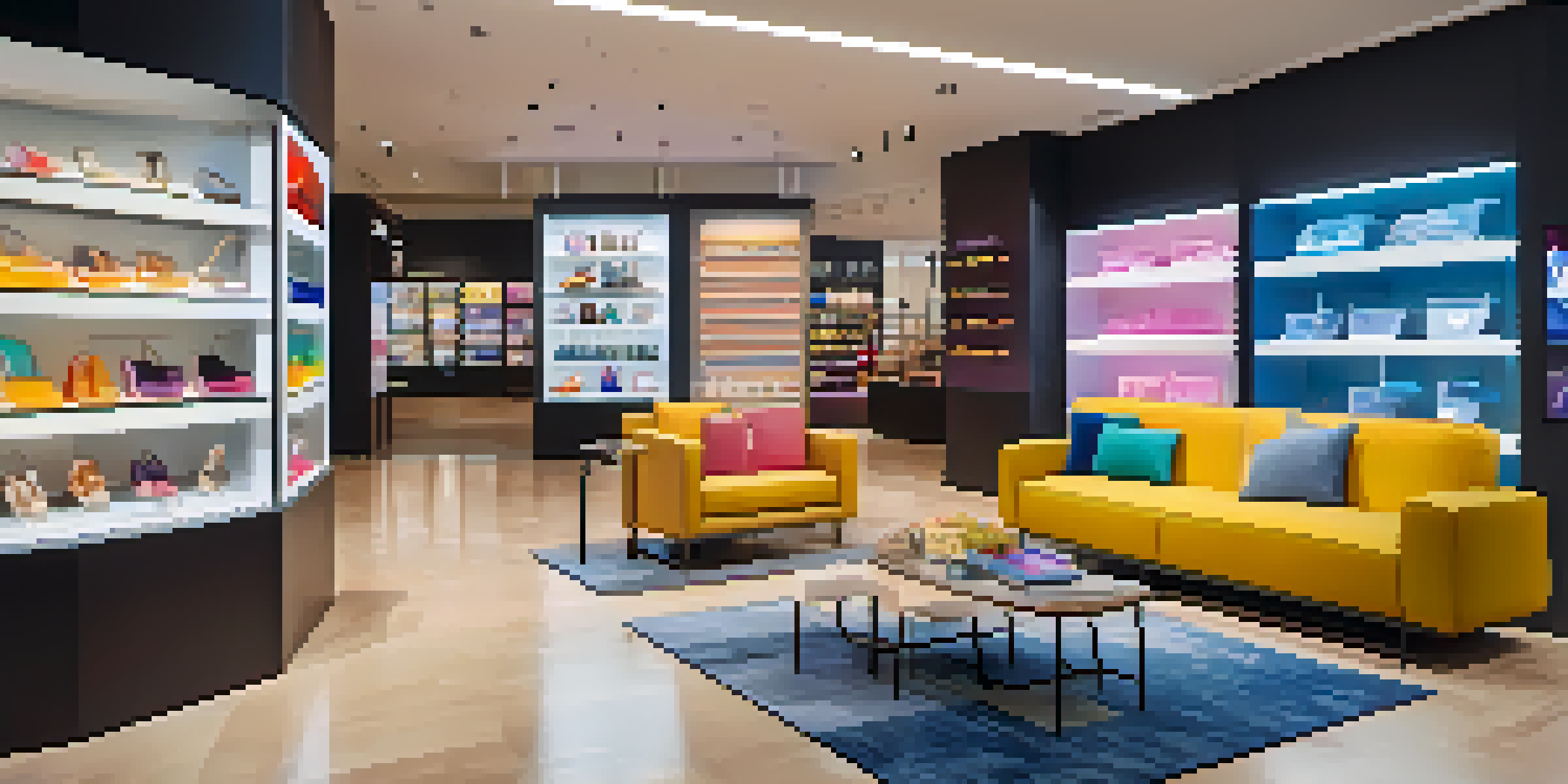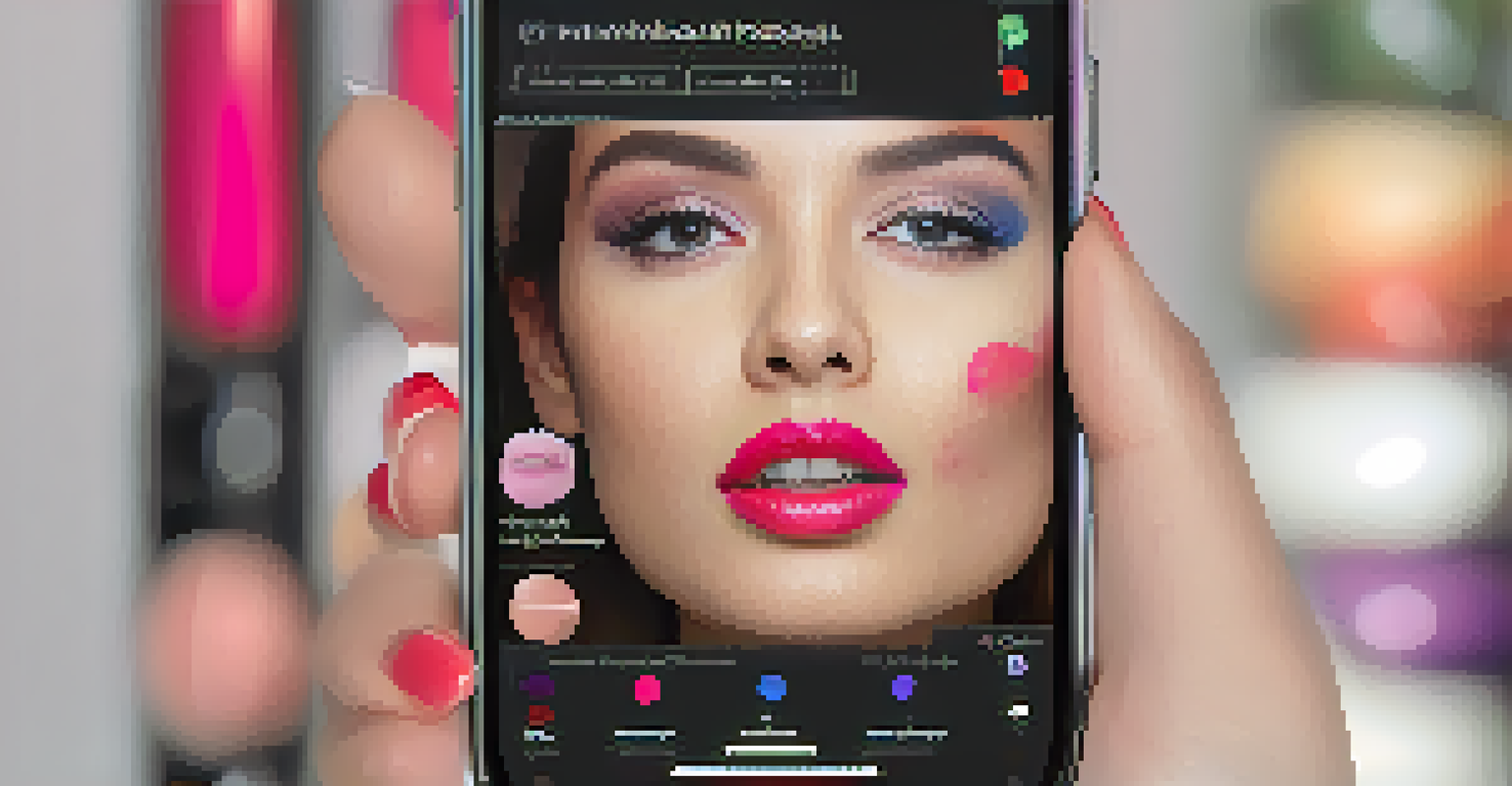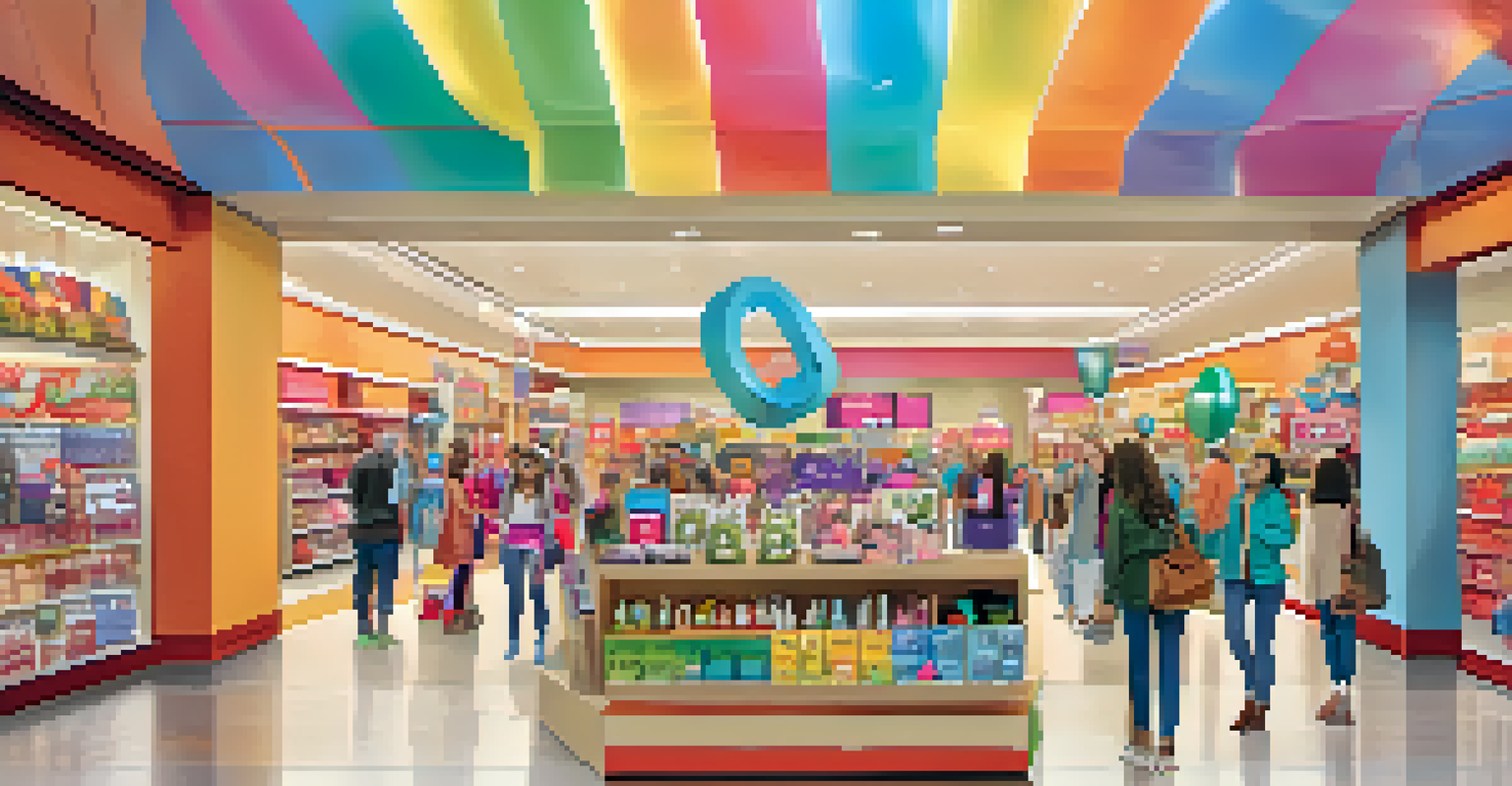Augmented Reality Experiences: Attracting New Retail Customers

Understanding Augmented Reality in Retail
Augmented reality (AR) blends the digital world with our physical environment, creating immersive experiences. In retail, this technology allows customers to interact with products in ways that were previously unimaginable. For instance, shoppers can visualize how a piece of furniture would look in their home before making a purchase, enhancing their confidence in buying decisions.
Augmented reality is not just a tool; it's a new way of experiencing the world.
This innovative approach not only captures attention but also fosters a deeper connection between customers and brands. By merging the online and offline shopping experiences, retailers can engage customers in a more meaningful way. As a result, AR is not just a novelty; it's becoming an essential tool in the competitive retail landscape.
Understanding how AR works sets the stage for its successful implementation in retail. Whether it’s through smartphone apps or in-store displays, the potential of AR to transform shopping experiences is vast and exciting.
Creating Engaging AR Experiences
To attract new customers, retailers must create engaging and relevant AR experiences. This means designing interactions that resonate with customers while showcasing products effectively. For example, a cosmetics brand might offer an AR feature that allows users to see how different makeup shades would look on their skin, making the shopping experience personal and fun.

Moreover, the interactivity of AR keeps customers engaged longer, increasing the likelihood of a purchase. When consumers can 'try before they buy' in an engaging way, they feel empowered and more likely to make informed decisions. This not only drives sales but also enhances brand loyalty.
AR Enhances Retail Shopping Experience
Augmented reality transforms how customers interact with products, allowing them to visualize items in their own space before purchasing.
Ultimately, the goal is to make the shopping journey as enjoyable and effortless as possible. By leveraging AR, retailers can create unique experiences that stand out in a crowded marketplace.
Leveraging Data for Personalized AR Experiences
Data plays a crucial role in enhancing AR experiences in retail. By analyzing customer preferences and behaviors, retailers can tailor AR features to meet individual needs. Imagine a clothing store that uses data to recommend outfits based on a shopper's past purchases and browsing history, all presented through an AR interface.
The future is already here — it's just not very evenly distributed.
This level of personalization not only improves the shopping experience but also increases conversion rates. When customers feel understood and catered to, they are more likely to engage with the brand and make a purchase. Data-driven AR experiences are thus a powerful way to attract and retain customers.
Incorporating customer feedback into AR offerings also helps retailers refine their strategies. This iterative approach ensures that the AR experiences remain relevant and appealing over time.
AR as a Tool for Enhancing In-Store Experiences
In-store AR experiences can create a buzz that draws customers into physical retail locations. For instance, a store might implement an AR scavenger hunt where customers use their smartphones to find hidden items, turning shopping into an adventure. This gamification not only entertains but also encourages exploration of the store.
Such interactive experiences can lead to increased foot traffic and higher sales. Shoppers are more likely to visit a store that offers something unique and engaging. Moreover, these experiences can be shared on social media, providing free marketing as customers showcase their fun shopping adventures.
Personalization Drives Customer Engagement
Leveraging data to create tailored AR experiences helps retailers meet individual customer needs, boosting engagement and conversion rates.
By integrating AR into the store environment, retailers can blend the advantages of online shopping with the tactile pleasure of in-person experiences.
Building Brand Loyalty Through AR
AR can be a powerful tool for building brand loyalty by creating memorable experiences. When customers engage with a brand through innovative AR features, they are likely to develop a positive association. For example, a furniture retailer offering an AR app that helps customers visualize their purchases in their own homes can create lasting impressions.
These memorable interactions can lead to repeat business, as satisfied customers return for more. Additionally, offering exclusive AR experiences to loyalty program members can make customers feel valued and appreciated, further enhancing their connection to the brand.
In a world where options are plentiful, creating unique and enjoyable experiences can set a brand apart and foster loyalty over time.
Challenges and Considerations in Implementing AR
While AR presents exciting opportunities, retailers must also navigate several challenges in its implementation. Technical issues, such as app functionality and user experience, can hinder the effectiveness of AR features. Retailers need to ensure that their AR applications are user-friendly and accessible to avoid frustrating potential customers.
Additionally, investing in AR technology can be costly, especially for small businesses. However, the long-term benefits in terms of increased customer engagement and sales can outweigh these initial expenses. Careful planning and budgeting are essential to successfully integrate AR into retail strategies.
AR Fosters Brand Loyalty
Innovative AR experiences create memorable interactions that encourage repeat business and strengthen customer relationships with brands.
Ultimately, addressing these challenges head-on allows retailers to reap the rewards of augmented reality in attracting and retaining customers.
The Future of AR in Retail
The future of augmented reality in retail looks promising as technology continues to evolve. As AR becomes more accessible and affordable, more retailers are likely to adopt it to enhance customer experiences. Innovations such as AR glasses may soon allow for even more seamless interactions, making shopping more intuitive and immersive.
Moreover, as consumer expectations shift towards personalized and engaging experiences, AR will play a critical role in meeting these demands. Retailers who embrace this technology now will be well-positioned to lead in the future market.

In this ever-changing landscape, staying ahead of the curve with AR can be the key to attracting new customers and building lasting brand loyalty.